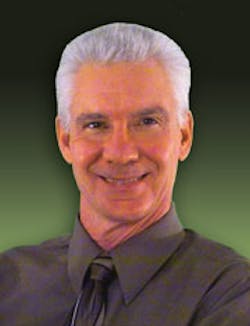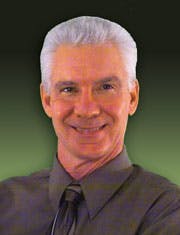UV Lights: Why and How to Sell Them
If your technicians aren’t recommending that your customers add at least one ultraviolet (UV) light to their system, they’re doing the customers a disservice and your company is missing out on a lot of extra moolah.
Your techs require education on UV lights. If your techs don’t have at least one standard UV light shining on their own indoor coil, and a photocatalytic oxidation (PCO) UV light in the air stream of their home HVAC system, they don’t know anything about UV light. If they knew, they would be selling them. UV lighting in homes and commercial buildings is essential.
What Techs Don’t Know
Here are some things your techs don’t know about UV lights:
1. You don’t really have to pull and clean indoor coils any more. Shine a UV light on a dirty evaporator coil 24 hours a day, and by the time the system is due for its next tune-up, the coil will be cleaner than it would have been if it had been cleaned it by hand.
Try it. Take a dirty coil you’ve replaced and shine a UV light on it. It might take a month or two to get the job done, but the UV light will clean it.
This means your techs can quote an indoor coil pull-and-clean and recommend to customers that they install a UV light to prevent it from clogging up again. If customers complain about having to spend money, your tech can say, “As long as you don’t require instant gratification, I can just install the UV light today, and by the time I arrive for your next precision tune-up, your indoor coil will be clean.”
2. You don’t need to have a mold problem or allergies to need a UV light shining on the coil. Nearly every indoor coil has debris on it. That debris is almost certainly composed primarily of dead skin cells: we shed up to 30,000 of them per hour. Those dead skin cells are also on the blower wheel. That’s why indoor coils and blowers stink. Go out and pick up a handful of dirt and sniff it. Dirt doesn’t stink. Neither does pollen. Most molds have a sweet smell. Dead skin cells stink. If a customer’s HVAC equipment is 8 years old, and they’ve only lived in the house for two years, they’ve got six years worth of the previous residents’ dead skin cells in their equipment.
3. Volatile organic compounds (VOCs) are much more toxic than mold, pollen, and dead skin cells. Television commercials quote the EPA as saying that indoor air pollution is up to five times worse inside your home than it is outside. When I ask techs and contractors what pollutants the EPA is talking about, they typically say pollen, dirt, mold, etc. Those are considered biological pollutants, but they are not the most serious problem nor are they the reason they say that indoor air is more polluted than outdoor air. The cancer-causing pollutants that are in your home and the homes of your customers are VOCs, and every structure has them.
The Environmental Protection Agency (EPA's) website states, “EPA's Office of Research and Development's ‘Total Exposure Assessment Methodology (TEAM) Study’ found levels of about a dozen common organic pollutants to be 2 to 5 times higher inside homes than outside, regardless of whether the homes were located in rural or highly industrial areas. TEAM studies indicated that while people are using products containing organic chemicals, they can expose themselves, and others, to very high pollutant levels, and elevated concentrations can persist in the air long after the activity is completed.”
Common VOCs are most cleaning supplies, wax, hairspray, deodorant, air fresheners, the formaldehyde in the carpet, the glues holding everything in the house together, pesticides, carbonless paper, dry cleaned clothing, moth repellents, and drier sheets.
The most effective way to reduce VOCs is with PCO cleaners.
If customers have plug-in air fresheners, they’re prime candidates for a PCO UV light. Ask them if they’d ever consider opening up that air freshener and drinking the liquid inside of it. They’ll think you’re crazy. Well, if you can smell it, you’re ingesting it. It’s in your blood stream. Inhaling the VOCs emanating from any air freshener is the same thing as eating or drinking it. If they’ve got air fresheners around, ask them why. They’re trying to hide an odor. The most effective way to reduce odors is to eliminate them with PCO cleaners.
By the way, the odor is probably all the dead skin cells in their equipment and ductwork.
Don’t call them “UV lights.” Call a standard UV light a “system sanitizer” and a PCO a “whole-house purification system.”
Stock Them and Talk About Them
If you want to sell more UV lights, you must stock them on the trucks. Conduct a training session on how to install them. Once your techs get the hang of it, they’ll be able to install one in less than half an hour.
It’s hypocritical to tell your customers that they need to upgrade their filtration system and get a couple of UV lights when you and your techs don’t use these products yourself. Buy them and install them in your own home and your shop, and get your techs to do the same, then you’ll all become like me – you won’t be able to shut up about them!
My Personal Testimonial
I already had two UV lights and an upgraded filtration system in each of my two air conditioning systems when I decided to have a PCO UV light installed in each of them.
One month later my ex came over and asked me what I’d done to get the house smelling so fresh and clean.
It was at that point that I realized I hadn’t used my asthma inhaler since the PCO UV light was installed!
I know many people have a problem with ozone, but there are people like me who happen to love it. For years I had an ozone generator on top of my refrigerator that I ran constantly. My HVAC contractor told me to shut it off the day he installed my PCO UV lights. He told me I’d probably never turn it on again. A month later I realized he was correct. My ozone generator has since taken up permanent residence in a closet.

